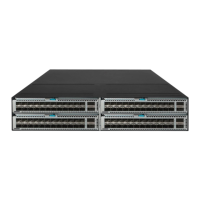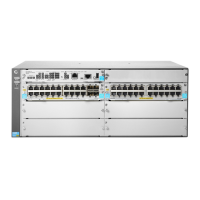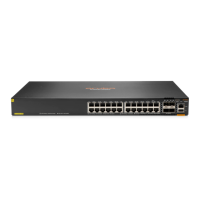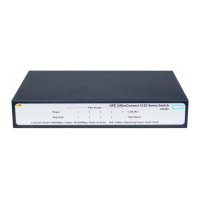128
As a result, loops occur in the switched network. The loop guard feature can suppress the
occurrence of such loops.
The initial state of a loop guard-enabled port is discarding in every MSTI. When the port receives
BPDUs, it transits its state. Otherwise, it stays in the discarding state to prevent temporary loops.
Do not enable loop guard on a port that connects user terminals. Otherwise, the port stays in the
discarding state in all MSTIs because it cannot receive BPDUs.
On a port, the loop guard feature is mutually exclusive with the root guard feature or the edge port
setting.
Configure loop guard on the root port and alternate ports of a device.
To enable loop guard:
Step Command Remarks
1. Enter system view.
system-view
N/A
2. Enter Layer 2 Ethernet interface or
Layer 2 aggregate interface view.
interface
interface-type
interface-number
N/A
3. Enable the loop guard feature for the
ports.
stp loop-protection
By default, loop guard is
disabled.
Configuring port role restriction
CAUTION:
Use this feature with caution, because enabling port role restriction on a port might affect the
connectivity of the spanning tree topology.
The bridge ID change of a device in the user access network might cause a change to the spanning
tree topology in the core network. To avoid this problem, you can enable port role restriction on a port.
With this feature enabled, when the port receives a superior BPDU, it becomes an alternate port
rather than a root port.
Make this configuration on the port that connects to the user access network.
To configure port role restriction:
Step Command Remarks
1. Enter system view.
system-view
N/A
2. Enter Layer 2 Ethernet
interface or Layer 2
aggregate interface view.
interface
interface-type
interface-number
N/A
3. Enable port role restriction.
stp role-restriction
By default, port role restriction is
disabled.
Configuring TC-BPDU transmission restriction
CAUTION:
Enabling TC-BPDU transmission restriction on a port might cause the previous forwarding address
table to fail to be updated when the topology changes.
The topology change to the user access network might cause the forwarding address changes to the
core network. When the user access network topology is unstable, the user access network might

